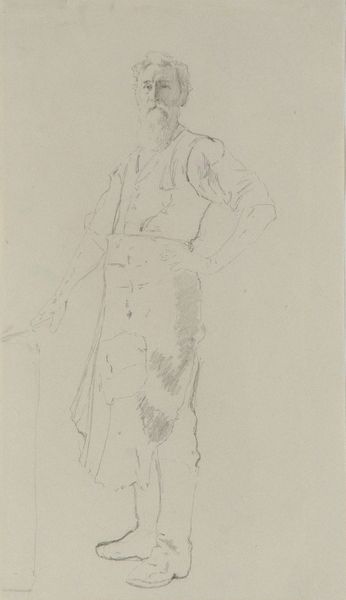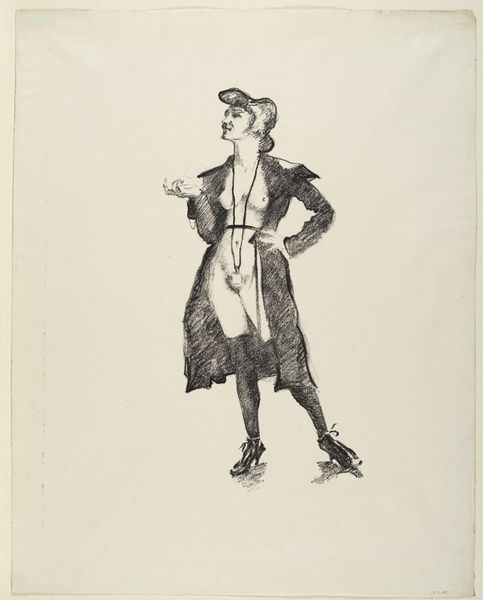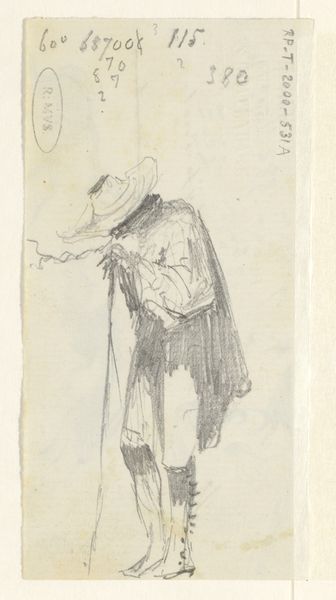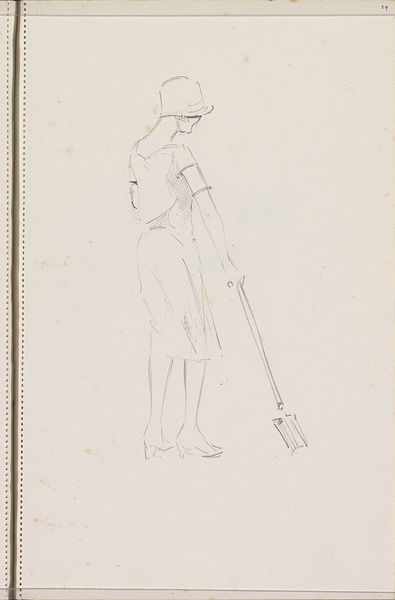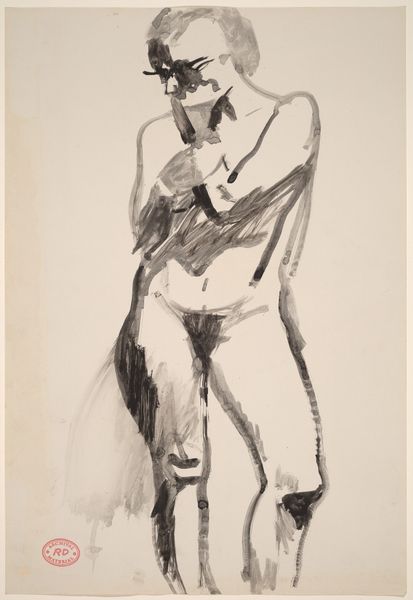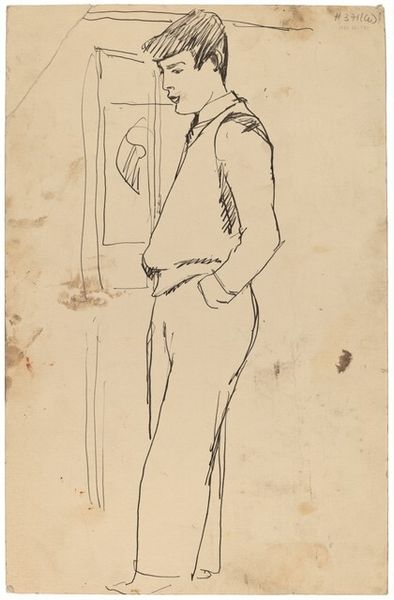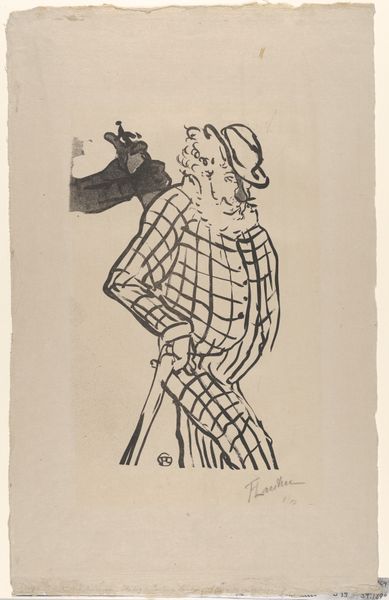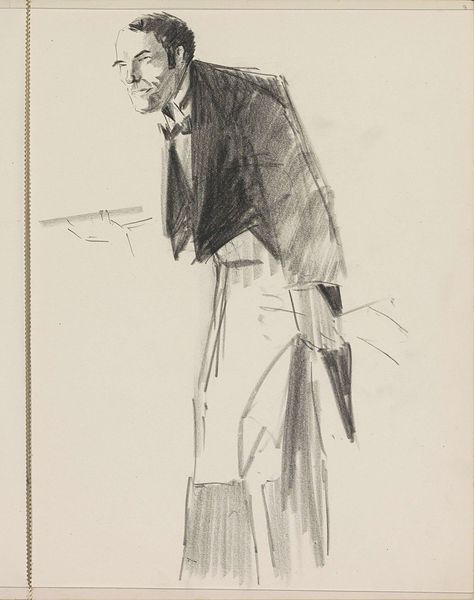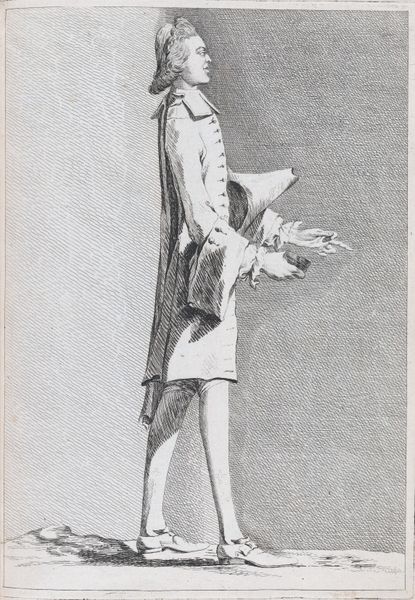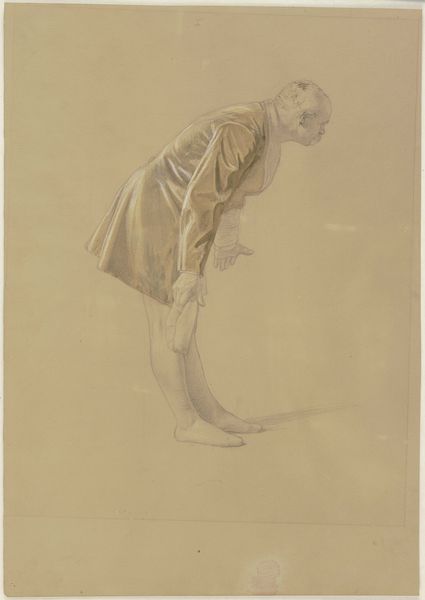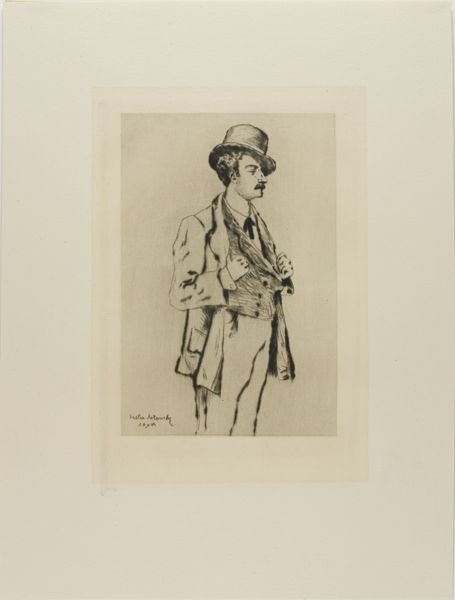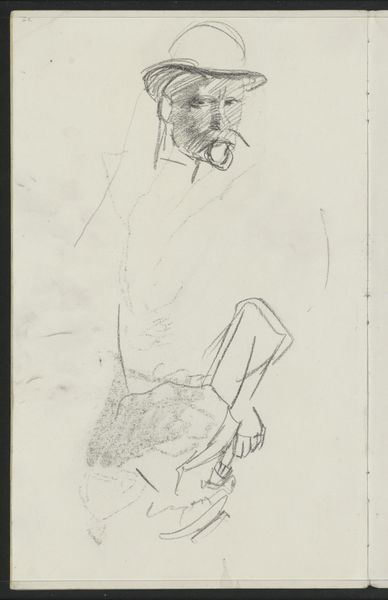
Copyright: Rijks Museum: Open Domain
Curator: This beguiling pencil sketch, created sometime between 1917 and 1919 by Otto Verhagen, presents us with a rather dapper Pierrot. Editor: He certainly has presence, doesn't he? There's a touch of melancholy, maybe, despite the monocle and jaunty hat. The whole composition is like a wisp of a dream, captured with such fragile lines. Curator: Fragile indeed. It's got that wonderful "first thought, best thought" energy of a sketch, hasn't it? That raw creative impulse is practically visible. It's also fascinating to me how Verhagen has taken this figure, so often associated with tragedy and romance, and given him this slightly… absurd twist. Editor: The monocle absolutely transforms the archetypal Pierrot. It's an immediate signifier of class and detached observation – even, dare I say, a hint of satire. The checkered trim, that black-and-white contrast, is so characteristic of the harlequin, playing between humor and lament, which Verhagen underscores through his choice to focus on the Pierrot. There's this fascinating visual tension there. Curator: I agree. It's like he's simultaneously embracing and critiquing the character. Perhaps he's using the Pierrot figure to explore ideas of performance, identity, and maybe even the absurdity of societal roles in a world consumed by conflict. The sketch gives an impression of being deeply felt, capturing a unique blend of world-weariness and sardonic humor. Editor: And that walking stick? It’s a symbol of both authority and vulnerability. Does he lean on it for support or wield it as an accoutrement, a stage prop for the character he performs? Curator: Precisely! And thinking about Verhagen’s experience, particularly during the time he created this, amidst the devastation of World War I, the Pierrot emerges as a particularly potent figure. A character who laughs to keep from crying, essentially. It lends even more pathos to what is initially just a sketch. Editor: This sketch is so telling of an individual reckoning, and by imbuing it with these larger symbols, Verhagen's really offering us an intimate look at universal themes, like isolation. I appreciate its intimacy; it offers a little insight into his world. Curator: Absolutely. It's a brief encounter, a quickly sketched observation.
Comments
No comments
Be the first to comment and join the conversation on the ultimate creative platform.


